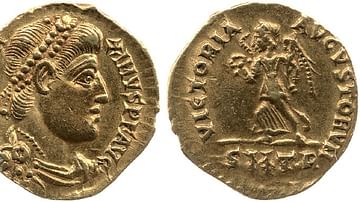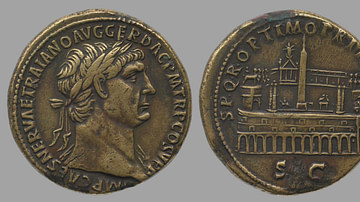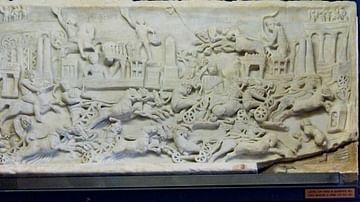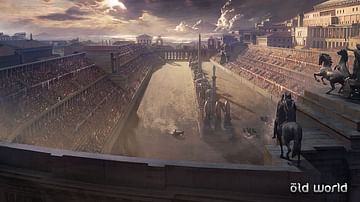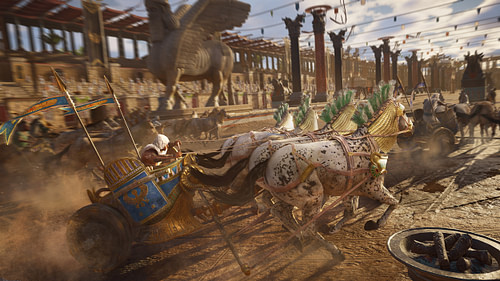
The Circus Maximus was a chariot racetrack in Rome constructed in the 6th century BCE. Used for other events such as the Roman Games and gladiator fights, it last hosted chariot races in the 6th century. Partially excavated in the 20th century and then remodelled, today it continues as an important public space, hosting music concerts and rallies.
Early Uses
The Circus Maximus, located in the valley between the Palatine and Aventine hills, is the oldest and largest public space in Rome and legend says that the Circus was originally laid out in the 6th century BCE by the first Roman kings, although, it first took on its distinctive shape under Julius Caesar. Its principal function was as a chariot racetrack and host of the Roman Games (Ludi Romani) which honoured Jupiter. These were the oldest games in the city and were held every September with 15 days of chariot races and military processions. In addition, Rome had many other games and up to 20 of these had one day or more at the Circus Maximus. Other events hosted at the site included wild animal hunts, public executions and gladiator fights, some of which were exotically spectacular in the extreme, such as when Pompey organised a contest between a group of barbarian gladiators and 20 elephants.
Dimensions
At its largest during the 1st century CE following its rebuilding after the fire of 64 CE, the Circus had a capacity for 250,000 spectators seated on banks 30 m wide and 28 m high. Seats were in concrete and stone in the lower two tiers and wood for the rest. The seats at the closed curved end date from the early 1st century CE. The outside of the circus presented an impressive front of arcades in which shops would have served the needs of the spectators. The Roman architectural historian Vitruvius also describes a temple of Ceres in the Circus and that it was decorated with terracotta statues or gilt bronze (On Architecture 3.3.5).
The Circus Maximus had the following main features:
- The track, originally covered in sand and measuring 540 x 80 m.
- 12 starting gates (carceres) for chariots arranged in an arc at the open end of the track.
- A decorated barrier (spina or euripus) complete with obelisks running down the centre of the track.
- Conical turning posts (metae) placed at each end of the track.
- Lap markers (eggs and dolphins) which were turned to mark the completion of each of the seven circuits of a typical race.

Chariot Races
The chariots themselves were colour-coded (red, white, green and blue) and could be pulled by teams of 4, 6, 8 or 12 horses. Victorious charioteers not only became rich with large cash prizes but they also became the darlings of the crowd, particularly with those who had placed bets, which were sometimes huge. Famous winners were Pontius Epaphroditus, Pompeius Musclosus and Diocles but perhaps the most famous of all, with more than 2,000 race victories, was Scorpus. Horses too became famous and much followed by the knowledgeable crowd. Famed throughout the Roman world, the races at the Circus Maximus were, then, the ones to win as it was by far the most important of the many circuses which dotted the Empire and its status is testified by its many representations in mosaics, relief sculptures and even coins.
The last official chariot race at the Circus Maximus was in 549 CE and was held by Totila, the Ostrogoth king. The site was then largely abandoned, although, the Frangipani did fortify the site in 1144 CE. The first excavations were carried out under Pope Sixtus V in 1587 CE and the two obelisks which had originally stood as part of the spina were recovered. One dates to c. 1280 BCE and was taken by Augustus from Heliopolis in Egypt in 10 BCE. This once stood at the east end of the spina but was relocated to Piazza del Popolo. The second obelisk which had stood in the centre of the spina dates to Thutmosis II (1504-1450 BCE) and was originally made for the temple of Amon at Karnak. Constantine I intended it for Constantinople but after remaining at the docks of Alexandria for 25 years, Constantius II brought it to Rome in 357 CE. It now stands in the Piazza S.Giovanni in Laterano (Rome).
Later Uses
The site was used for industry and even a gasworks in the 19th century CE but in the 1930s CE the area was cleared and converted into a park made to resemble the original form of the Circus. Also in 1930, the site was again excavated, a process which continued between 1978 and 1988 CE. Original seats were revealed, as were the starting gates and the spina. However, the latter two were re-covered and now lie some 9 m under the present ground level. The curved seat end continues to be excavated today whilst the main part of the circus is still used for large public events such as concerts and rallies.
![Circus Maximus [Present Day]](https://www.worldhistory.org/img/r/p/500x600/1276.jpg?v=1718938028)
